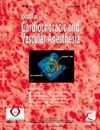The Effect of Extracorporeal Membrane Oxygenation on the Pharmacokinetics of Dexmedetomidine Hydrochloride
IF 2.3
4区 医学
Q2 ANESTHESIOLOGY
Journal of cardiothoracic and vascular anesthesia
Pub Date : 2025-03-01
DOI:10.1053/j.jvca.2024.12.029
引用次数: 0
Abstract
Objectives
Our objective was to explore the effects of extracorporeal membrane oxygenation (ECMO) on the pharmacokinetics of dexmedetomidine hydrochloride via vitro and in vivo experiments
Design
A single-center animal investigation.
Setting
An experimental animal facility in a tertiary hospital.
Participants
Eighteen male Landrace pigs.
Interventions
For the in vitro experiment, ECMO circuits were primed with whole blood solutions of dexmedetomidine at different concentrations and ran ex vivo. The adsorption rates of dexmedetomidine hydrochloride in ECMO circuits and control glass tubes were compared at 60 minutes, 5 hours, and 10 hours after the start of the in vitro experiment. In the in vivo experiment, 12 Landrace pigs were randomly allocated to the venovenous ECMO group or the control group. Dexmedetomidine hydrochloride (1 μg/kg) was administered to both groups. Blood samples were collected at 0 minutes, 5 minutes, 10 minutes, 15 minutes, 20 minutes, 30 minutes, 45 minutes, 60 minutes, 90 minutes, 2 hours, 3 hours, 5 hours, 7 hours, and 10 hours after administration. The plasma concentrations of dexmedetomidine were measured, and pharmacokinetic analysis was conducted in both groups.
Measurements and Main Results
The results revealed no significant difference in adsorption rates of dexmedetomidine hydrochloride in ECMO circuits at 60 minutes and 5 hours, but differences were observed at 10 hours. In vivo experiment, pharmacokinetic analysis revealed no significant difference in the area under the curve (AUC0-t), AUC0-∞, distribution half-life, elimination half-life, clearance, apparent volume of distribution, mean residence time or peak drug concentrations between the 2 groups (p > 0.05).
Conclusions
The ECMO circuit had an adsorption effect on dexmedetomidine hydrochloride, but this effect was not sufficient to impact the in vivo pharmacokinetics of dexmedetomidine significantly. The effect of ECMO on the pharmacokinetics of dexmedetomidine hydrochloride was not significant.
体外膜氧合对盐酸右美托咪定药动学的影响。
目的:我们的目的是通过体外和体内实验探讨体外膜氧合(ECMO)对盐酸右美托咪定药代动力学的影响。环境:某三级医院实验动物设施。参与者:18头雄性长白猪。干预措施:体外实验采用不同浓度右美托咪定全血溶液灌注ECMO回路,体外运行。比较体外实验开始后60min、5h、10h盐酸右美托咪定在ECMO回路和对照玻璃管中的吸附率。在体试验中,将12头长白猪随机分为静脉-静脉ECMO组和对照组。两组均给予盐酸右美托咪定(1 μg/kg)。于给药后0分钟、5分钟、10分钟、15分钟、20分钟、30分钟、45分钟、60分钟、90分钟、2小时、3小时、5小时、7小时、10小时采集血样。测定两组患者右美托咪定血药浓度,并进行药代动力学分析。测量结果及主要结果:结果显示,盐酸右美托咪定在ECMO回路中60分钟和5小时的吸附率无显著差异,但在10小时时存在差异。体内药代动力学分析显示,两组在曲线下面积(AUC0-t)、AUC0-∞、分布半衰期、消除半衰期、清除率、表观分布容积、平均停留时间、峰药浓度等指标均无显著差异(p < 0.05)。结论:ECMO回路对盐酸右美托咪定有吸附作用,但不足以显著影响右美托咪定的体内药代动力学。ECMO对盐酸右美托咪定药动学的影响无统计学意义。
本文章由计算机程序翻译,如有差异,请以英文原文为准。
求助全文
约1分钟内获得全文
求助全文
来源期刊
CiteScore
4.80
自引率
17.90%
发文量
606
审稿时长
37 days
期刊介绍:
The Journal of Cardiothoracic and Vascular Anesthesia is primarily aimed at anesthesiologists who deal with patients undergoing cardiac, thoracic or vascular surgical procedures. JCVA features a multidisciplinary approach, with contributions from cardiac, vascular and thoracic surgeons, cardiologists, and other related specialists. Emphasis is placed on rapid publication of clinically relevant material.

 求助内容:
求助内容: 应助结果提醒方式:
应助结果提醒方式:


